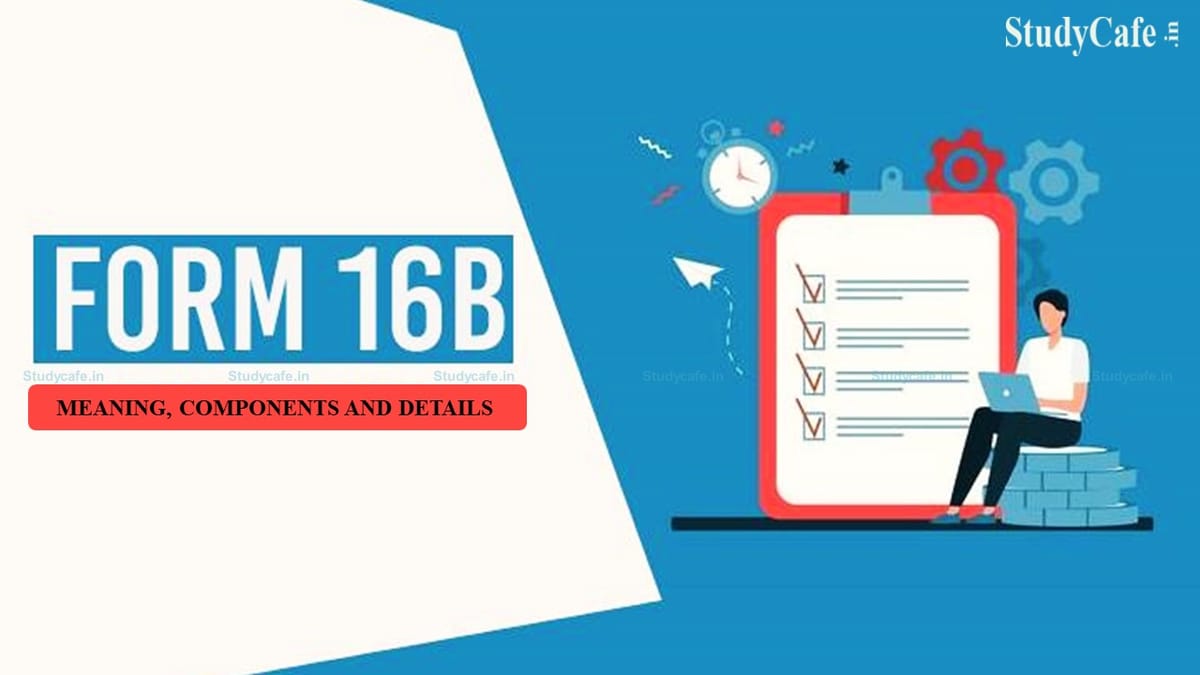Deepshikha | Dec 15, 2021 |

Form 16B: Meaning, Components and Details
Salaried individuals are taxed according to appropriate slabs under the Income Tax Act of 1961, and are expected to file tax returns by a certain date each year. Form 16 is one of the certificates issued by employers that contains information about what salaried employees must file to file their income tax returns.
Everyone with taxable income is required to file an income tax return to declare their earnings and liabilities. In India, however, income tax regulations allow for the collection/deduction of tax at the source (TDS/TCS). On the one hand, this provides a steady flow of money to the government, while on the other, it keeps a close eye on tax evasion.
It is the payer’s responsibility to deduct tax (TDS/TCS) and pay it to the government’s credit. Obtaining a Tax Deduction Account Number (TAN) is required for such a tax deduction. Deductors must additionally file a Tax Deduction at Source (TDS) return for each quarter of the financial year, detailing the deductees, nature of the payment, tax deducted, the rate at which it is deducted, and so on. The TDS returns were filed to make it easier for the IRS to credit TDS to the correct deductees.
In addition to submitting returns, the deductor must supply the deductee with a TDS certificate for the tax deducted. Form 16B is one of the TDS certifications that the deductor is required to issue to the deductee under the Income-tax Act of 1961 in respect of TDS deposited with the government. The provisions relevant to Form 16B have been examined in this article under the following primary headings:
Form 16B is often a TDS certificate issued to a seller by a purchaser, i.e. a deductor. It assists taxpayers in determining the overall amount of tax deducted at the source when buying a home. The deductor deposits the tax amount with the Income Tax Department. Form 16B is a certificate that shows the entire TDS deducted in the event of a property sale.
TDS on immovable property, for example, is governed by the ITA’s Section 194-IA. Agricultural and immovable properties with a sale value of less than Rs.50 lakh, however, are exempt from TDS.
Buyers are required to subtract a 1% TDS upon receiving payment under Section 194 of the ITA. The buyer must provide Form 16B income tax to the seller once the tax amount has been deposited with the IT Department.
This document certifies the TDS applicable on the sale proceeds of the property, as opposed to Form 16, which is a TDS certificate for salary and Form 16A, which is a TDS certificate for non-salary income.
Detailed salary information, such as HRA and claimed deductions such as PPF, NSC, Pension, Gratuity, Leave Encashment, LTA, and so on.
Deductions are available under Chapter 6A of the Income Tax Act.
Tax and surcharge on education (if any).
You’ll obtain more than one Form 16 if you worked more than one job in a year.
The employer completes the Part B Form and issues it along with the Part A Form.
When filing their forms, taxpayers frequently mistake Form 16A and Form 16B. Even though they are all part of the same certificate, each form serves a different purpose. To greatly simplify the tax filing process, taxpayers must learn about their reasons
In case of any Doubt regarding Membership you can mail us at contact@studycafe.in
Join Studycafe's WhatsApp Group or Telegram Channel for Latest Updates on Government Job, Sarkari Naukri, Private Jobs, Income Tax, GST, Companies Act, Judgements and CA, CS, ICWA, and MUCH MORE!"